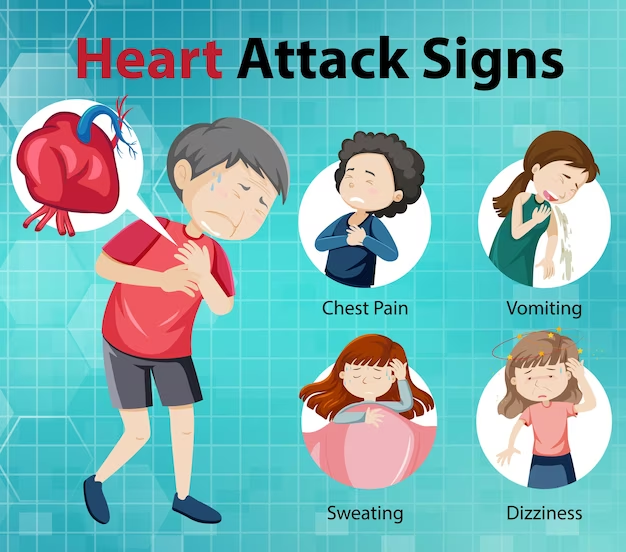Dizziness and Vertigo : how to deal with it
Introduction :
Dizziness and vertigo are among the most common symptoms causing patients to visit a physician (as common as back pain and headaches). Falling can be a direct consequence of dizziness in this population, and the risk is compounded in elderly persons with other neurologic deficits and chronic medical problems. These terms are often used interchangeably, but they refer to distinct experiences. Dizziness can encompass various sensations, including lightheadedness, unsteadiness, and a feeling of floating. Vertigo, on the other hand, is characterized by a false sense of spinning or movement, as if the surrounding environment is in motion.
A report using data from the Swedish National study on Aging and Care (SNAC) found that in patients younger than 80 years, the prevalence of falls was 16.5% and that of dizziness was 17.8%, whereas in patients older than 80 years, the prevalence of falls was 31.7% and that of dizziness was 31.0%. [3] The younger patients tended to have more specific predictive factors, whereas the older patients tended to have more general ones.
Causes of Dizziness and Vertigo:
Inner Ear Disorders: Benign Paroxysmal Positional Vertigo (BPPV), Meniere's disease, vestibular neuritis, and labyrinthitis.
Vestibular Migraines: Migraine headaches that manifest with vertigo and dizziness.
Medication Side Effects: Certain medications can disrupt the inner ear's balance mechanisms.
Low Blood Pressure: Sudden drops in blood pressure can lead to dizziness.
Anxiety and Panic Disorders: Psychological factors can contribute to dizziness and vertigo.
Cardiovascular Issues: Conditions like arrhythmias and heart disease can cause inadequate blood flow to the brain.
Neurological Conditions: Multiple sclerosis, stroke, brainstem and cerebeller vascular lesions and other neurological disorders can affect balance and perception.
Low blood Sugar : Hypoglycemia can also cause dizziness.
Signs and Symptoms :
The signs and symptoms of dizziness and vertigo can vary depending on the underlying cause. Some of the most common signs and symptoms include:
Lightheadedness
motion intolerance
Spinning sensation
Imbalance
Nausea and vomiting
Sweating
Ringing in the ears
Hearing loss
Difficulty concentrating
Fatigue
The time course of vertigo is important:
Episodic vertigo that lasts for days with nausea and no other ear or CNS symptoms is usually due to vestibular neuritis, especially following viral illness
Episodic vertigo that lasts for seconds and is associated with head or body position changes is probably due to benign paroxysmal positional vertigo (BPPV)
Vertigo that lasts for hours is probably caused by Meniere disease (if associated with hydropic ear symptoms)
Vertigo of sudden onset that lasts for minutes can be due to migraine or brain or vascular disease, especially if cerebrovascular risk factors are present.
Diagnosis:
Medical History and Physical Examination: Evaluating symptoms and ruling out other conditions.
Dix-Hallpike Maneuver: Positioning nystagmus is a classic finding in patients with benign paroxysmal positional vertigo (BPPV). It is elicited by moving the patient rapidly from the sitting position to the head-right-down and head-left-down positions while observing and recording resulting nystagmus and symptoms. Hyperextension of the neck is not necessary and should be avoided.
Videonystagmography (VNG): Measures eye movements to assess inner ear and central nervous system function.
MRI or CT Scan: Imaging to identify structural abnormalities or neurological causes.
Electronystagmography (ENG): Records eye movements to evaluate vestibular system integrity.
Caloric testing: This test measures the response of your inner ear to warm and cold water.
Rotating Chair testing : The test is most useful in determining the degree of central vestibular compensation and the residual vestibular function in cases of bilateral vestibular loss.
Management:
Epley Maneuver: Treatment for BPPV involving specific head and body movements to reposition displaced particles in the inner ear.
Medications: It is managed with vestibular suppressants, antiviral medication, and antiemetic medications. Steroids are useful in selected patients. Vestibular suppressants should be used for a few days at most because they delay the brain’s natural compensatory mechanism for peripheral vertigo.
Vestibular Rehabilitation: It is very useful in boosting central vestibular compensation.
Lifestyle Modifications: Avoiding triggers like caffeine, alcohol, and stress.
Cognitive Behavioral Therapy: Effective for managing anxiety-related dizziness.
Surgical Interventions: In severe cases, surgery may be considered for certain conditions.
Physical therapy: Physical therapy can help to improve balance and coordination.
Don't try it at home , must visit your healthcare professional if you feel any above mentioned sign and symptoms.
Conclusion:
Dizziness and vertigo can stem from a variety of causes, ranging from inner ear disorders to psychological factors. Recognizing the distinction between these sensations and understanding their underlying causes is essential for proper diagnosis and effective management. With advancements in medical technology and tailored therapies, individuals experiencing dizziness and vertigo can find relief and regain their sense of balance and well-being. If you or someone you know is grappling with these symptoms, seeking medical attention and exploring appropriate interventions can pave the way for a more stable and comfortable life.
weeklyhealinghealth.blogspot.com
https://rumble.com/v3c1mxg-vertigo-exercises.html










Comments
Post a Comment